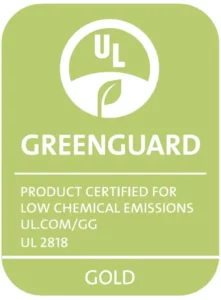Years ago, when there was almost no medical research, people already knew that the breasts of all female mammals produce a special fluid. That fluid is the colostrum, which is essential for the immunity and survival of a child or pup.

What is colostrum?
Colostrum (also known as first milk) is a thick, yellowish fluid, with a significantly higher nutrition value from the mature breast milk. It is the first milk that a newborn consumes, and can not be made artificially.
The foundation for its formation begins during pregnancy when individual components start slowly passing from the blood into the mother’s mammary glands. But most of the colostrum forms right after birth.
The amount of the colostrum is pretty small and often confuses young mothers thinking their newborn is not getting enough food. But don’t worry! Newborns have a very small stomach. Therefore, its ability to provide all nutrients in a concentrated low-volume form is actually colostrum’s biggest advantage.
That small amount covers all newborn’s nutritional needs. And that’s not all. The role of the colostrum is not just providing nutrition. It is also extremely rich in antibodies and proteins. As such, it protects a newborn against viral and bacterial infections and helps in the baby’s development, growth, and vitality..

Why is colostrum so important?
A newborn is born into a non-sterile environment, where bacteria immediately begin colonizing his body. Coming from the sterile environment in the uterus, she has not yet formed his immune system. In other words, we are born without an immune system.
When we overcome a particular illness, our body produces antibodies against it. These antibodies float in our blood and protect us from getting ill again. In breastfeeding mothers, antibodies pass into colostrum, which later protects their baby from these particular diseases. As such, is an exclusively breastfeed newborn in a huge advantage over a formula-fed one.
Because of these properties, many call it a “baby’s first vaccine” or a “liquid gold”.
Colostrum is a natural and 100% safe vaccine, with a similar composition to blood. It works the same as vaccines, with a privilege that it doesn’t have any side effects!
It is low in fat and rich in carbohydrates, protein, and antibodies. It contains over 60 substances, 30 of which are found only in human milk.
Colostrum, a highly nutritious first milk
Colostrum is a highly nutritious first milk with a lot of benefits for the baby. It has the same components as mature breast milk. The difference is in their concentration. The amounts of ingredients in the colostrum are adjusted to the newborn’s needs and highly concentrated in a small volume.
Colostrum benefits for the baby:
- builds the baby’s immune system
- provides energy
- boost the baby’s development and growth
- with a mild laxative effect, helps the newborn passing first stool
Colostrum is rich in nutrients and molecules to support the organism. It is rich in minerals and vitamins, with a much higher concentration of vitamins A, E, and K from the mature breast milk. It also contains much more protein than mature breast milk.
Colostrum contains a high amount of antibodies and white blood cells. It is rich in immunoglobulin (Ig), antimicrobial peptides, and other bioactive molecules, including growth factors.
While the nutrients help tissue development, growth, and providing energy, immunoglobulin, growth factors, and antibodies contribute to much-needed immunity.
Another important colostrum benefit is its laxative effect. As such, it helps the baby pass her first stool (meconium) and reduces the chance of jaundice.
The laxative effect of the colostrum increases the newborn’s appetite. As a result, she latches more frequently, which promotes the formation of mature breast milk.
The mother’s milk is uniquely adapted to her baby’s needs, so experts recommend exclusive breastfeeding for the first half-year of the baby’s life. Breastmilk is the only necessary food and liquid your baby needs until she turns 6 months!
Frequently Asked Questions about
Human Colostrum
How long do you have colostrum?
The second phase of lactogenesis begins right after the placenta is expelled from your body. That usually happens about 5 to 30 minutes after your baby is born. But that doesn’t mean the milk will replace the colostrum right away.
A sudden drop in progesterone triggers the formation of milk, which will replace the colostrum in the following days.
Milk usually comes three to five days after birth, when the colostrum and milk are mixed until about two weeks after birth. So, the colostrum gradually turns into breast milk in about ten to fourteen days after birth.
Then the mother starts producing so-called mature milk. Its amount increases sharply, while the level of antibodies decreases.
However, your baby will still receive immune protection against many viruses and bacteria during the whole breastfeeding.
Is colostrum enough for a newborn?
Colostrum is probably the most valuable and ideal food that will ever flow after the digestive tract of the child throughout his life. It is available immediately, and you have enough of it, even if we measure it in teaspoons.
When mothers hear about such a small amount, they often wonder if this is really enough for their baby. It is enough! Colostrum is the only food and drink your newborn needs.
A 1-day old newborn has a stomach capacity of about 5-7 milliliters (1 – 1.4 teaspoons).
Should you pump colostrum?
If your baby is not nursing well, you may need to express it, but it is recommended that you do it by hand rather than use a breast pump.
Colostrum is thicker than breast milk, so it can easily stick to the bottles or pump parts and be harder to collect. Due to its denser structure, the pumping might take more effort as well.
Can you run out of colostrum?
No, the colostrum does not run out. You will continue to provide colostrum until your breast starts producing mature milk.
What if I have no colostrum?
The real lactation failure is very rare. If you can’t express the colostrum, that doesn’t mean it is not there.
What is the difference between milk and colostrum?
Breast milk and colostrum contain the same ingredients, but their amount greatly differs.
Colostrum vs. breast milk
| Colostrum | Breast Milk | |
|---|---|---|
| Quantity | small | much larger |
| Presence | between 1 and 3 days after birth ( + mixing with milk until 14th day after birth) | it starts forming around 3th day after the birth and fully produces after 14 days – until you stop with breastfeeding |
| Color | yellowish | white |
| Density | thick | similar to water |
| Nutrition | extremely high | normal |
| Antibodies | extremely high | their amount slowly declines and is much lower, but they are present throughout breastfeeding |



